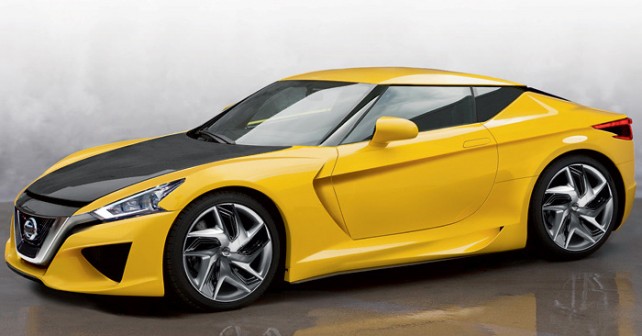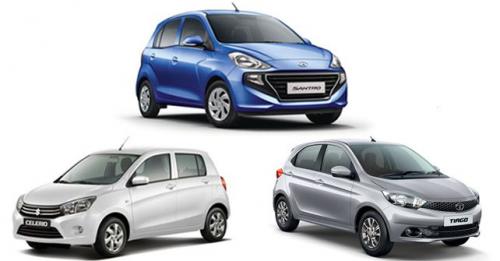
The successor of the 370Z will be smaller, lighter, and more efficient. With distinct style and personality, it’s capable of reviving the glory of Datsun – which, in the 70’s, dared to compete with the most highly regarded American and European sports cars.
Why start with a blank page when there’s a glorious past to draw inspiration from? Definitely not for a lack of ideas. What’s more, the ‘remake’ is often quite successful – even in the automotive world. The trick is adapting the icons of yore to the ones of the present. This is the golden rule driving the technicians at Nissan, engaged as they are with dusting off the wonderful memories of a coupe of much zest and spice, which, in the 70’s, offered bodywork inspired by the most highly-touted sports cars of the time – but at a much more reasonable price, without leaving out the appeal of a six-cylinder engine.
New beginning with the Z
On the design tables, the heir to the 370Z (known as the Z35 project) has the task of interpreting (in a modern context) the sensuous forms, and, particularly, the spirit of the 240Z – a Datsun from the golden age, thanks to which the brand became a synonym of sportiness (of course, that was before becoming the current brand of choice in Nissan for emerging markets). The next Z, which may be present in concept form as early as January next year, in Detroit, would retain its link to the 370, but will most likely be smaller – giving up at least 5 of its 185cm in length. It will likely also be lighter, thanks to the use of high strength steel, which should help it shed about 100 kilos – leaving it to weigh in just below the 1,300kg mark, which is considered to be textbook weight in this category.
Under the hood, long as it is (in accordance with the 240Z tradition), there could be a V6 engine – if Nissan wants to stay true to tradition. However, the alternative could also constitute a historic turning point – eliminate two pistons, and move to a four-cylinder model, which would be more in keeping with the times. Cubic capacity of not more than 2.5 liters, and with horsepower figures that could reach 300bhp, or 275bhp more realistically – resulting in a decisive cut in emissions and fuel consumption. Naturally, in order to get the fans to accept this, the best marketing and communication experts will need to be summoned – but, at Nissan, there are those who are convinced by this solution.
The Z35 will likely be smaller, lighter, more environmentally friendly, and simpler than the 370. With fewer gadgets, it would be in a position to lower the price as well. The goal would be to rival the hugely successful Toyota GT86. This would not only revive the spirit of the 240Z, but also the commercial success the 350Z achieved between 2003 and 2009.
It may debut in Detroit
The Z35 concept, set to succeed the 370Z, could debut at the first auto show of 2014, and thereafter go into production in 2015.
Inspired by the Prancing Horse and the Jaguar
THE AFFORDABLE JAPANESE COUPE
The 240Z debuted in 1969 under the Datsun brand (which back then consisted of a few Nissan sport cars). It was a two-seater coupe, 4,130mm long, which was quite long for the time – and which drew obvious inspiration from the cult models like the Ferrari GTO and Jaguar E-Type. Interestingly, it was sold at a modest price compared to its less iconic competitors. MacPherson suspension, disc brakes in front and drum brakes at the rear, a 2.4 litre straight-six engine producing 150bhp, a 4-speed transmission in North America, and a 5-speed in Europe. It’s career in the World Rally Championship culminated in two victories in the Safari Rally, in ‘71 with Edgar Hermann and in ’73 with Shekhar Mehta. However, never did the highly renowned Rauno Aaltonen (in this photo) reach the highest step of the podium. The 240Z was substituted in 1979 by the 280ZX.
A FEW GOOD CARS, AND A SUPERSTAR
Currently, Nissan offers two sports models – the 370Z (coupe and roadster), and the GT-R.
370Z Coupe
Introduced at the 2008 Los Angeles Auto Show, it replaced the 350Z. In Japan, it maintains the name of Fairlady Z, which is the sixth series of the model that followed the Datsun 240Z. 4,250mm long and propelled by a 3.7 V6 engine delivering 328bhp.
370Z Roadster
The open-top version of the 370Z made its debut at the New York Auto Show in 2009, hitting the market the following year. The electrically activated roof is made of canvas. It’s not to be thought of as an evolution of the coupe though (with which it happens to share the mechanics), but as a project developed independently from the start.
GT-R
4,660mm in length, the brand’s first supercar was born in 2007 – replacing the Skyline GT-R. The disappearance of the Skyline name in favour of the sole acronym is to indicate the beginning of a new range. The engine is a hand-made, 3,799cc V6 delivering 480bhp. Four-wheel drive, 315km/h max speed, and a 0-100 dash in 2.7 seconds make for some serious numbers.e 0-100 in 2,7 secondi (model year 2013).
© Riproduzione riservata




























Write your Comment